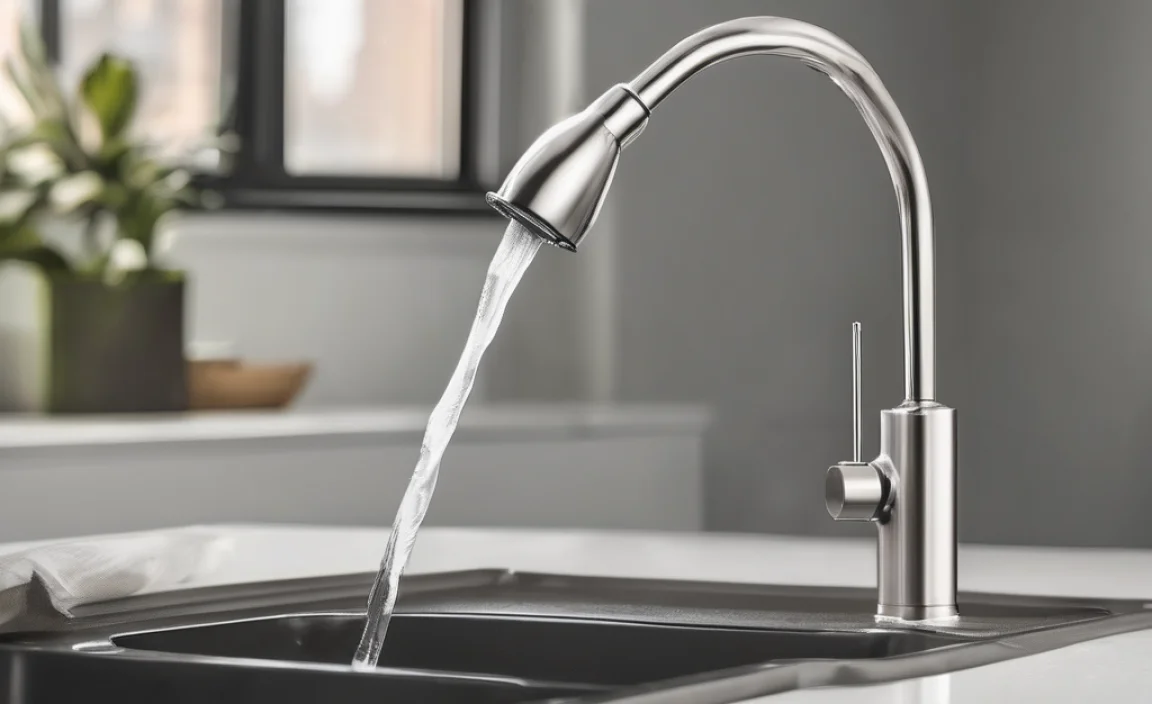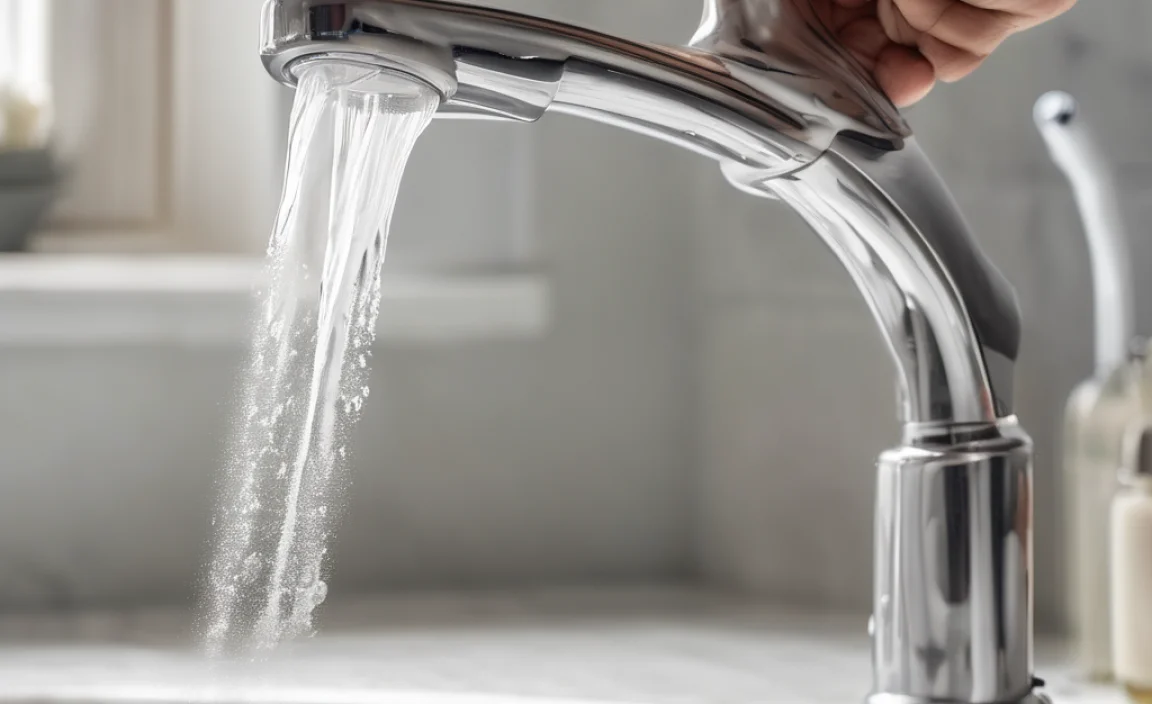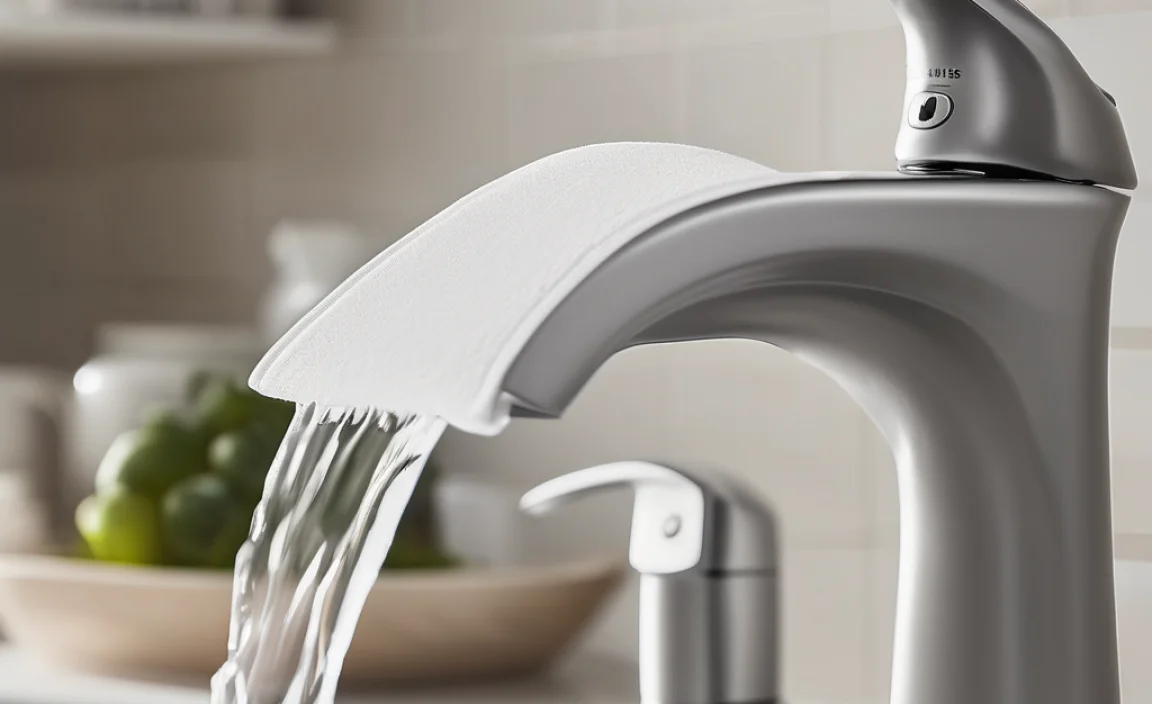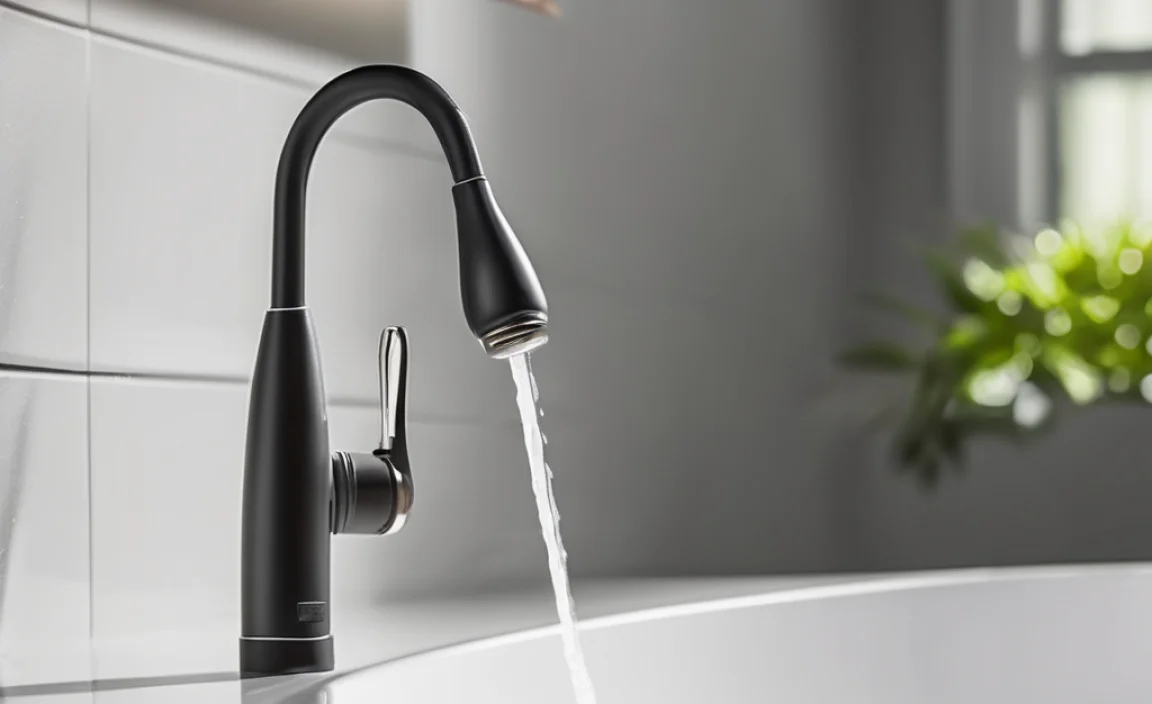Quick Summary: Yes, foam faucet covers work to prevent pipes from freezing in cold weather. They provide insulation, trapping heat and slowing down the cooling process. They are most effective when properly installed before temperatures drop significantly and in conjunction with other preventative measures like dripping faucets.
Worried about your pipes freezing when the temperature drops? You’re not alone! Frozen pipes can burst, causing major headaches and expensive repairs. Luckily, there’s a simple and affordable solution: foam faucet covers. But do they really work?
The good news is, yes, they can! Foam faucet covers act like a cozy blanket for your outdoor faucets, protecting them from the harsh cold. This article will walk you through everything you need to know about using foam faucet covers effectively. We’ll cover how they work, how to install them, and other tips to keep your pipes safe all winter long. Let’s get started!
Understanding How Foam Faucet Covers Work

Foam faucet covers are designed to insulate your outdoor faucets. Insulation slows down the transfer of heat. Think of it like a thermos. A thermos keeps hot drinks hot and cold drinks cold by minimizing heat transfer. Foam faucet covers do the same thing for your faucets.
Here’s a simple breakdown of how they work:
- Insulation: The foam material acts as a barrier. It prevents cold air from directly contacting the faucet.
- Heat Retention: The cover traps any existing heat around the faucet. This keeps the faucet warmer for a longer period.
- Slows Cooling: By reducing heat loss, the cover slows down the rate at which the faucet cools. This is crucial in preventing freezing.
While foam covers are helpful, they’re not magic. They work best when used proactively, before a deep freeze sets in. They also work best when combined with other cold weather precautions.
Types of Foam Faucet Covers

Foam faucet covers come in a few different styles. Here’s a look at the most common types:
- Standard Foam Covers: These are simple, dome-shaped covers made of foam. They usually have a hole for the faucet spout and are secured with a drawstring or elastic band.
- Hard-Shell Covers with Foam Insulation: These covers have a hard plastic outer shell with foam insulation inside. They offer extra protection against physical damage and can provide better insulation.
- Faucet Socks: These are fabric covers with insulation. They slip over the faucet and are secured with a Velcro strap.
Here’s a table summarizing the different types:
| Type | Material | Attachment | Pros | Cons |
|---|---|---|---|---|
| Standard Foam Covers | Foam | Drawstring or Elastic | Inexpensive, easy to install | Less durable, may not provide maximum insulation |
| Hard-Shell Covers | Plastic shell with foam | Various (e.g., clips, screws) | Durable, better insulation | More expensive, can be harder to install |
| Faucet Socks | Insulated Fabric | Velcro Strap | Easy to install, reusable | May not provide as much insulation as foam |
When choosing a cover, consider your climate and the level of protection you need. For very cold climates, a hard-shell cover with foam insulation might be the best choice. For milder climates, a standard foam cover may be sufficient.
Step-by-Step Guide to Installing Foam Faucet Covers

Installing foam faucet covers is a quick and easy DIY project. Here’s how to do it:
Step 1: Gather Your Supplies
You’ll need:
- Foam faucet covers (appropriate for your faucet size)
- Measuring tape (optional, to ensure correct size)
- Clean cloth (to wipe the faucet)
Step 2: Clean the Faucet
Before installing the cover, wipe down the faucet with a clean cloth. This removes any dirt or debris that could trap moisture and reduce the cover’s effectiveness.
Step 3: Install the Foam Faucet Cover
- Standard Foam Covers:
- Open the drawstring or elastic band.
- Slide the cover over the faucet, ensuring the spout fits through the hole.
- Tighten the drawstring or elastic band to secure the cover. Make sure it’s snug but not too tight.
- Hard-Shell Covers:
- Follow the manufacturer’s instructions. These covers usually have clips or screws to attach them to the faucet.
- Ensure the cover is securely fastened and covers the entire faucet.
- Faucet Socks:
- Slip the sock over the faucet.
- Secure the Velcro strap tightly around the faucet.
Step 4: Check the Seal
Make sure the cover fits snugly against the wall. You want to minimize any gaps where cold air can enter. If there are gaps, you can use weather-stripping tape to seal them.
Step 5: Monitor and Maintain
Check the covers periodically throughout the winter. Make sure they are still securely in place and haven’t been damaged by weather or animals. Replace any covers that are damaged or missing.
Tips for Maximizing the Effectiveness of Foam Faucet Covers

Foam faucet covers are a great first step, but here are some extra tips to ensure your pipes stay protected:
- Drip Faucets During Extreme Cold: When temperatures drop significantly, let your faucets drip slightly. Moving water is less likely to freeze than still water.
- Insulate Exposed Pipes: Wrap any exposed pipes in unheated areas (like basements or crawl spaces) with pipe insulation.
- Seal Air Leaks: Seal any cracks or openings in your home’s foundation or walls. This prevents cold air from entering and affecting your pipes.
- Know Where Your Main Water Shut-Off Valve Is: In case of a burst pipe, knowing how to quickly shut off the water can minimize damage.
- Use a Smart Thermostat: A smart thermostat helps maintain a consistent temperature in your home, preventing drastic temperature drops that can freeze pipes.
Cost of Foam Faucet Covers vs. Potential Savings

Foam faucet covers are very affordable. You can typically buy them for just a few dollars each. A small investment can save you from much larger expenses.
Here’s a comparison of the cost of faucet covers versus the potential cost of repairing a burst pipe:
| Item | Estimated Cost |
|---|---|
| Foam Faucet Cover | $3 – $10 per cover |
| Professional Plumber Visit (Burst Pipe) | $150 – $500+ |
| Water Damage Repair | $500 – $10,000+ (depending on severity) |
As you can see, the cost of preventing frozen pipes is significantly lower than the cost of repairing the damage they can cause. Investing in foam faucet covers is a smart and cost-effective way to protect your home.
When Foam Faucet Covers Might Not Be Enough
While foam faucet covers are helpful, there are situations where they might not be enough to prevent frozen pipes. These include:
- Extremely Cold Temperatures: In areas with prolonged periods of extremely cold temperatures (below 20°F or -6°C), foam covers alone may not provide enough insulation.
- Inadequate Home Insulation: If your home is poorly insulated, cold air can easily penetrate walls and affect your pipes.
- Pipes in Unheated Areas: Pipes located in unheated areas like garages, crawl spaces, or attics are more vulnerable to freezing.
- Lack of Snow Cover: Snow acts as a natural insulator for underground pipes. A lack of snow cover can increase the risk of freezing.
In these situations, you’ll need to take additional precautions, such as those listed above (dripping faucets, insulating pipes, sealing air leaks).
Alternatives to Foam Faucet Covers
If you’re looking for alternatives to foam faucet covers, here are a few options:
- Heat Tape: Heat tape is an electrical cable that wraps around pipes and provides heat to prevent freezing. It’s a more expensive option than foam covers, but it can be very effective in extremely cold climates. Always follow the manufacturer’s safety guidelines, and use only heat tape that is certified by a nationally recognized testing laboratory such as UL (Underwriters Laboratories) or ETL (Electrical Testing Laboratories) [https://www.ul.com/].
- Insulated Faucet Covers: These are similar to foam covers but are made of thicker, more insulating materials. They provide better protection in very cold temperatures.
- Hose Bib Covers: These covers are designed specifically for hose bibs (outdoor faucets). They are typically made of hard plastic or metal and provide excellent insulation and protection.
Debunking Common Myths About Frozen Pipes
There are many misconceptions about frozen pipes. Here are a few common myths debunked:
- Myth: Pipes only freeze in very cold climates.
- Fact: Pipes can freeze in any climate where temperatures drop below freezing.
- Myth: Running water will always prevent pipes from freezing.
- Fact: While running water helps, it’s not a guarantee. In extreme cold, even moving water can freeze.
- Myth: Once a pipe freezes, it will always burst.
- Fact: Not always. If you thaw a frozen pipe slowly and carefully, you may be able to prevent it from bursting. However, it’s always best to prevent freezing in the first place.
FAQ About Foam Faucet Covers
Do foam faucet covers really prevent freezing?
Yes, foam faucet covers do help prevent faucets from freezing by providing insulation and slowing down heat loss. However, they are most effective when used in conjunction with other preventative measures.
How do I know what size foam faucet cover to buy?
Measure the diameter and length of your faucet. Choose a cover that is slightly larger than your faucet to ensure a snug fit. Most covers come in standard sizes, so you should be able to find one that fits your faucet.
Can I reuse foam faucet covers every year?
Yes, you can reuse foam faucet covers as long as they are in good condition. Check them for any damage or wear and tear before each winter season. Replace them if they are cracked, torn, or no longer provide a snug fit.
When should I install foam faucet covers?
Install foam faucet covers before the first hard freeze of the season. This is typically in the late fall or early winter. Pay attention to weather forecasts and install the covers as soon as temperatures are predicted to drop below freezing.
Are foam faucet covers waterproof?
While foam faucet covers provide some water resistance, they are not completely waterproof. If they get wet, they may lose some of their insulating properties. Choose covers made of water-resistant materials, or consider using a hard-shell cover for better protection.
Can I use duct tape to secure foam faucet covers?
While duct tape can help secure foam faucet covers, it’s not the best solution. Duct tape can deteriorate over time and may leave a sticky residue. Instead, use the drawstring or elastic band that comes with the cover, or use weather-stripping tape to seal any gaps.
Will foam faucet covers protect against burst pipes?
Foam faucet covers can help prevent burst pipes by preventing faucets from freezing. However, they are not a guarantee. If you live in an area with extremely cold temperatures, you should take additional precautions, such as dripping faucets and insulating pipes.
Conclusion
Foam faucet covers are a simple, affordable, and effective way to protect your outdoor faucets from freezing. By understanding how they work, choosing the right type, and following the installation steps outlined in this article, you can keep your pipes safe all winter long. Don’t forget to combine foam covers with other preventative measures for maximum protection. A little preparation goes a long way in preventing costly repairs and keeping your home safe and sound. Stay warm!


